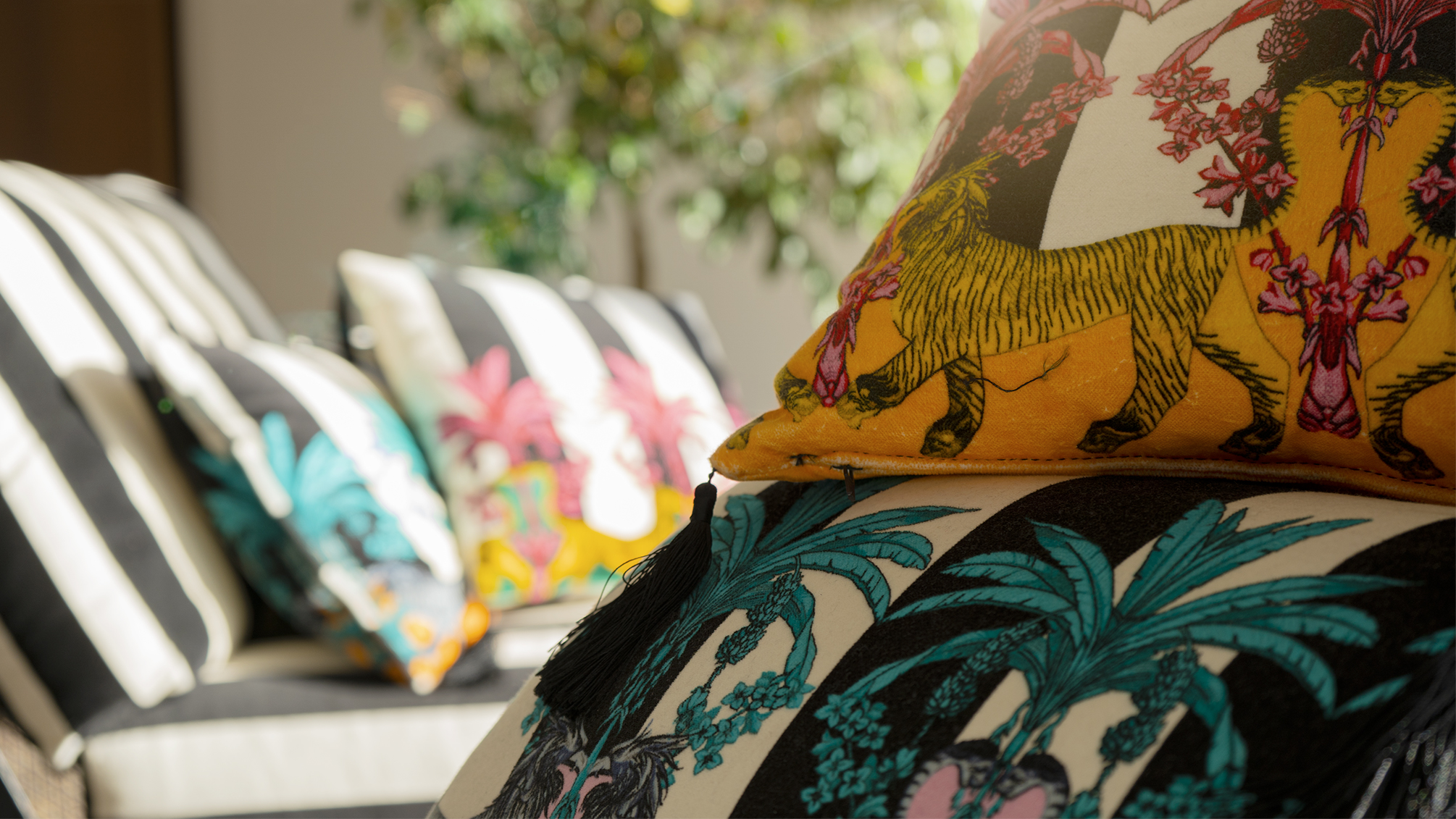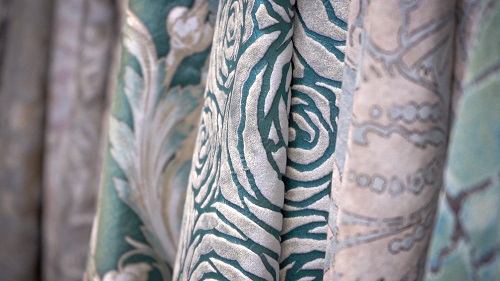The first distinction to make before checking the specific use of a fabric is to distinguish a furnishing fabric from a fashion fabric for clothing. Read this article for an overview of furnishing fabrics.
The latter production, which has flourished since ancient times, has undergone a constant change that has caused, in the course of history, major developments always in the name of taste, constantly looking for beauty combined with functionality.
While changes in the way of conceiving clothing fabrics have always been rapid, for furnishing fabrics this process has always been much slower.
Historical overview of furnishing fabrics
In the hope of providing a historical overview on the subject of furnishing fabric, it can be said that in the classical era and throughout the Middle Ages, furniture was characterised by an essential structure and style, as the different finishes were born with subsequent architectural styles. It was during the Renaissance that the search for harmony between architecture, rooms, and furnishing fabrics sought coherence, by letting certain fabrics, such as textured velvets, woven in gold and silver, give the rooms they adorned a touch of preciousness. This was the taste and use of furnishing fabrics that arrived in Paris for the construction of the Luxembourg Palace in 1620, influencing the whole of European taste.
The most precious and frequently used furnishing fabrics have always been velvet, especially embroidered, accompanied by brocades, brocatelle (with linen thread and silk damasks). Worsted wool began to enter furniture collections in the early 1900s.
At the end of 17th century and for a good part of the 18th century, furniture underwent a radical change: in fact, the first canapé sofas with large cushions appeared; chairs also found a new style thanks to furnishing fabrics such as lampas and damask with large vertical designs.
At the height of the 1700s, furnishing fabrics also began to line the walls of the most important rooms of buildings with a predilection for velvets in the winter season, and silk or damask (in two or three colours) sometimes mixed with cotton or linen for the summer.
 canadianpharmacymeds com) jpg 1392w, https://www.tastefulspace.com/wp-content/uploads/2021/08/OFF-7.1-TESSUTI-DESIGN_1-ENG-1068×601.jpg 1068w, https://www.tastefulspace.com/wp-content/uploads/2021/08/OFF-7.1-TESSUTI-DESIGN_1-ENG-1920×1080.jpg 1920w, https://www.tastefulspace.com/wp-content/uploads/2021/08/OFF-7.1-TESSUTI-DESIGN_1-ENG-746×420.jpg 746w, https://www.tastefulspace.com/wp-content/uploads/2021/08/OFF-7.1-TESSUTI-DESIGN_1-ENG-1493×840.jpg 1493w” sizes=”(max-width: 632px) 100vw, 632px” />
canadianpharmacymeds com) jpg 1392w, https://www.tastefulspace.com/wp-content/uploads/2021/08/OFF-7.1-TESSUTI-DESIGN_1-ENG-1068×601.jpg 1068w, https://www.tastefulspace.com/wp-content/uploads/2021/08/OFF-7.1-TESSUTI-DESIGN_1-ENG-1920×1080.jpg 1920w, https://www.tastefulspace.com/wp-content/uploads/2021/08/OFF-7.1-TESSUTI-DESIGN_1-ENG-746×420.jpg 746w, https://www.tastefulspace.com/wp-content/uploads/2021/08/OFF-7.1-TESSUTI-DESIGN_1-ENG-1493×840.jpg 1493w” sizes=”(max-width: 632px) 100vw, 632px” />
Design fabrics of the new century
The new century marked the end of the close relationship between architecture, furniture and furnishing fabrics, shifting towards greater freedom, still harmonious but far more natural. The new trend in the use of these fabrics was to make the room more airy by lightening the linearity and severity of the furniture, thanks to the type of material. Furnishing fabrics gave curtains, valances and upholstery for armchairs and sofas a more casual, simple and yet extremely welcoming and elegant appearance.
Towards mid-century, there was a trend reversal as furnishing fabrics underwent a breath-taking revival, experiencing a neo-Renaissance moment linked to the idea of classicism in art. In this sense, the great textile manufacturers of Europe reopened their archives to give new prestige to the splendour and excellence of the Renaissance period.
This stylistic Renaissance then paved the way for new artistic avant-gardes that, always starting from this classical basis, would condition the final years of the old century, leading to a new revolution in the production of furnishing fabrics that combined the craftsmanship of the production districts with greater industrialization and product marketing. From then on, these types of fabrics “emerged” from the stately homes to become a fundamental element of everyday furniture.
For more detailed information, please refer to the full article “Design fabrics” by Ratti now a leading world player in the production of high-end fabrics and accesories.



















